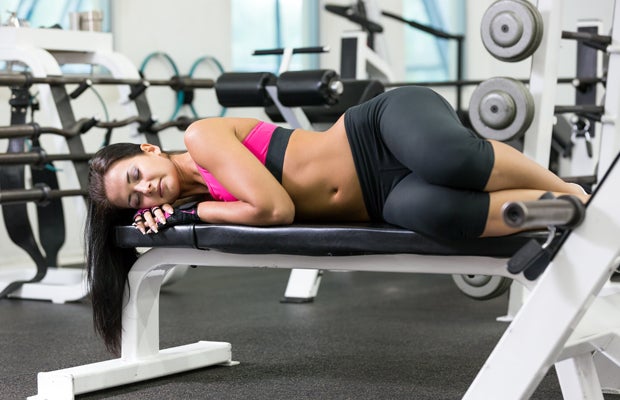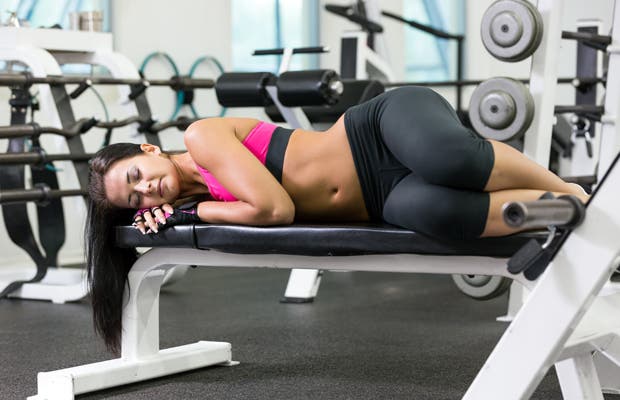The Power of Iron


When Tamara Louis first noticed changes in her workout performance, she didn’t find it cause for concern. “I just thought I was overtraining,” says the British Columbia, Canada, native, who’d been an avid high-intensity interval training gym and runner enthusiast for years. She also commuted to work by bike. So she dialed down her workouts, even took days off. Yet nothing worked, and her frustration mounted. After suffering for almost seven months, Louis, 43, finally sought help from her doctor. The diagnosis? Iron deficiency.
Louis isn’t alone. Nine percent of women aged 20 to 49 suffer from iron deficiency, essentially low iron stores, according to the Centers for Disease Control and Prevention. But you are particularly vulnerable if you are an active woman, especially if you do endurance activities.
“Endurance athletes, particularly runners, have greater loss of iron in their sweat and through foot strike hemolysis, which is the destruction of red blood cells from repetitive foot strikes on pavement,” says Kelly Pritchett, Ph.D., RD, CSSD, assistant professor of nutrition and exercise at Central Washington University in Ellensburg, Washington. In fact, a study published in the Journal of Internal Medicine found that among 113 male and female joggers and competitive runners, 56 percent had iron deficiency, women mainly because of iron loss from menstruation and men because of long-distance training.
Women pursuing aesthetic (like gymnastics and diving) or intense ball sports are also at risk, Pritchett says. And if any of these women is following a vegan or vegetarian diet, is prone to heavy menstrual bleeding or is pregnant, iron losses may be even more pronounced.
The upshot? Exercise performance, even mood, will undoubtedly plummet. “If you’re iron deficient, you might have trouble completing a workout or may not be able to compete or exercise at a high intensity,” says Pritchett, who was diagnosed with iron deficiency as a collegiate swimmer. As a result, her swimming times were slower, and she often felt fatigued during practices.
Your Iron Fix
If you’re feeling unusually fatigued or your physical performance has deteriorated, call your doctor, who can run a simple blood test to measure your iron levels. Just don’t start popping iron supplements until you know for sure that your iron levels are low. Too much iron — 40 milligrams per day is the tolerable upper limit — can cause gastrointestinal distress, diarrhea or constipation, and it also can lead to liver toxicity, which usually shows up after menopause, says James McClung, Ph.D., nutrition biochemist at the U.S. Army Research Institute of Environmental Medicine in Massachusetts.
If tests reveal that your iron levels are low, you have several options, including eating more iron-rich foods, taking a multivitamin that contains iron or using iron supplements. Yet because iron deficiency is difficult to correct with diet alone, iron supplements are preferred, says Sant-Rayn Pasricha, MPH, Ph.D., postdoctoral fellow at the University of Oxford in the United Kingdom. Your doctor will help determine how much you should take because every woman is different.
Just allow time for your body to correct the issue. In a study McClung ran on 219 military women whose iron levels were depleted after eight weeks of combat training, benefits of iron supplementation were evident within eight weeks. Yet it could take months — perhaps up to three, Pasricha says — for the problem to be resolved. The good news, though, is that restoring iron levels can boost physical performance, improving VO2 max and submaximal exercise, meaning that exercise will be more efficient, according to Pasricha’s review of several studies in the Journal of Nutrition.
So will you have to alter your fitness program while you’re boosting iron levels? Possibly. “Women who are iron deficient can continue training within reason but may need to make a few modifications,” McClung says.
First, listen to your body — “You will have days where you lack motivation to exercise or just feel sluggish,” Pritchett says — and know when to pull back. Also, avoid introducing new activities or doing high-intensity training until your iron levels have been restored because both can tax iron stores more, McClung says.
These have been hard lessons for Louis to swallow. She did have to put a halt to running for several months, although after almost six months of taking iron supplements and boosting intake of iron-rich foods in her diet, she’s finally running again. Intense workouts are still tough for her, requiring her to stop for rest periodically, but she’s finally beginning to feel better — and younger — again. “Maybe 40 really can be the new 30,” she says.
Five Tips to Maximize Your Iron Intake
Getting the iron you need isn’t just about eating iron-rich foods. A few tricks can help you get the most iron from your diet. Here are five to put on your radar:
- Know that heme iron (think red meat, fish and poultry) is absorbed by your body two to three times more efficiently than non-heme iron sources. Yet if you’re vegetarian or vegan, you don’t have to give up your lifestyle. “But you will have to plan your meals more carefully,” Kelly Pritchett says.
- Consume iron-rich foods (and iron supplements) with vitamin C–rich foods to increase absorption, Pritchett says. For instance, eat an orange with cereal or add bell peppers to chicken stir-fry.
- Cook foods in cast-iron pots to increase absorption.
- If you drink coffee or tea, avoid sipping these drinks at meals, consuming them instead between meals. “Coffee and tea don’t allow the body to absorb iron as well,” Pritchett says.
- Calcium-rich foods also compete for iron absorption, so it’s best not to eat foods with iron in the same meal as yogurt, milk and other dairy products.